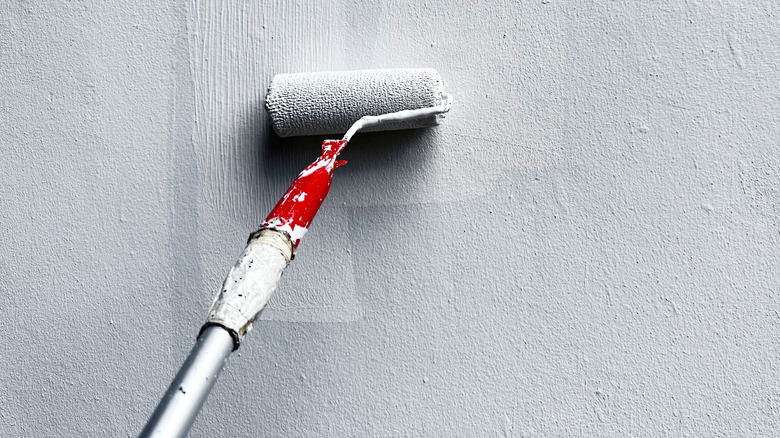The Best Way To Paint Over Old Cigarette Ceiling Stains
We may receive a commission on purchases made from links.
It's no secret that cigarette smoke can negatively impact your home's resale value, but it's not just the smell. It's tough to deal with nicotine stains. It doesn't matter if they are on the wall, floor, or ceiling. Technically, however, the culprit is not nicotine but tar, a yellowish-brown residue of cigarette smoke after the weight of water and nicotine is removed. These are the particles that cigarette filters are designed to block. When the tar ends up on ceilings thanks to rising cigarette smoke, the ensuing yellowish stains can be pretty difficult to remove. Of course, you can try to wash away the cigarette stains by scrubbing with a mixture of warm water and a mild detergent. You can also mix TSP with water and then use a sponge to wipe and scrub the spots. Either way, it is a back-breaking job. Worse, there's a chance you'll not completely remove the stains.
Luckily, the answer is simple: Just paint over the stains. However, there's a particular way you'll need to do it. First, you have to use the correct primer. Opt for a stain-blocking primer such as Zinsser's B-I-N Primer-Sealer. If you don't use a primer — or use the wrong one — the cigarette stains often bleed through the paint. That said, a primer is not some stand-alone magic bullet.
Other tips on painting over cigarette ceiling stains
As crucial as using the correct primer is, there's a process for priming over cigarette stains. Start by first removing the stains by dry cleaning. At this stage, the best tool to use is a dry-cleaning sponge, the type made of natural vulcanized rubber. Other sponges tend to smear the stain all over and can worsen an already bad situation. If the sponge is clogged, peel the outward layer with a razor blade so you can work with a new, clean layer. Just don't use water on a dry-cleaning sponge. For old, stubborn stains, you should follow this with a wet-cleaning regimen, preferably a solution of TSP and warm water, per the manufacturer's instructions. After this, use a regular sponge (but not one you've already used for something else) to wipe the surface.
Once the surface is completely dry, you're ready to apply the Zinsser BIN Primer. Beware that this primer is thin and can be messy. It also has quite a strong odor. Fortunately, one round of application should do. After this, you can now safely proceed to the main painting. Thankfully, you can use whatever paint you prefer, whether latex or oil-based, and say goodbye to old cigarette stains.

